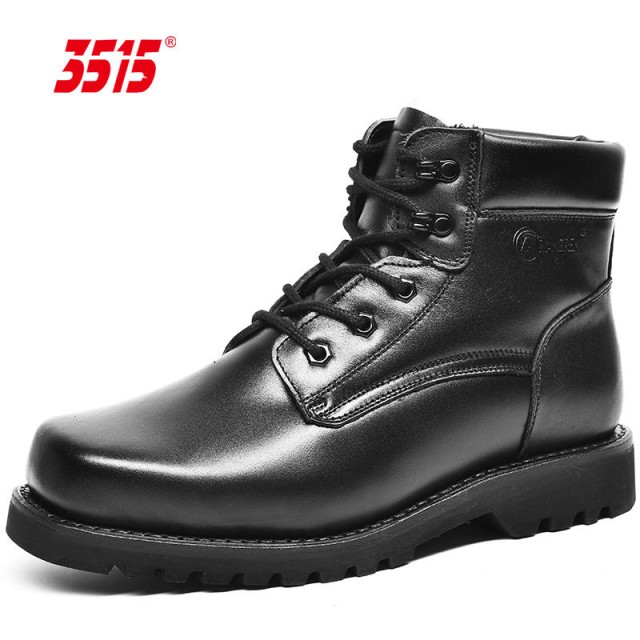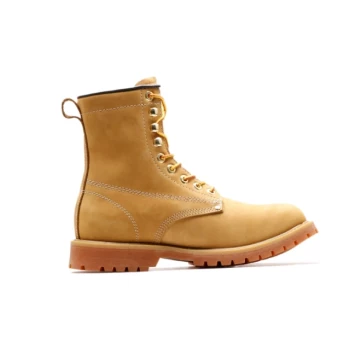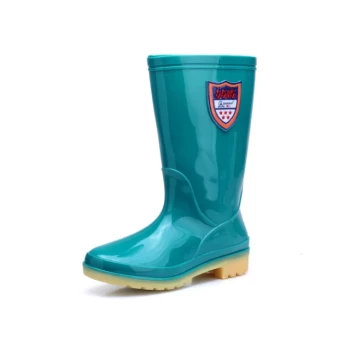Modern workplaces demand more than generic footwear—they require tactical boots engineered to counteract precise hazards. While basic durability matters, true protection lies in specialized features addressing environmental threats, physical risks, and compliance requirements. This article dissects how tactical boot design goes beyond material properties to deliver targeted safety solutions.
Tactical Boot Features for Hazard Mitigation
Material Innovation vs. Environmental Threats
Tactical boots leverage advanced materials to combat environmental dangers:
- Chemical Resistance: Oil rig workers need boots that repel corrosive substances. Synthetic fabrics and treated leathers prevent degradation from hydrocarbons, acids, or solvents.
- Thermal Regulation: Composite toe caps (carbon fiber/Kevlar) outperform steel in extreme temperatures, avoiding heat conduction in foundries or electrical hazards in utility work.
- Waterproofing: Breathable membranes like Gore-Tex® block liquid ingress while releasing sweat vapor—critical for flood zones or maritime environments.
Research shows material selection directly impacts fatigue reduction. Lighter composites reduce leg strain during 12-hour shifts by approximately 15–20% compared to traditional steel toes.
Structural Defenses Against Physical Risks
- Puncture-Resistant Midsoles: Construction sites demand embedded plates to stop nails or glass shards. These thin but dense layers add minimal weight while preventing foot penetrations.
- Slip-Resistant Outsoles: Tread patterns with wide grooves and rubber compounds maintain grip on oily surfaces, reducing fall risks in kitchens or warehouses.
- Ankle Support: High-cut designs with reinforced collars minimize twist injuries on uneven terrain common in logging or mining.
Certifications as Hazard Compliance Benchmarks
Look for labels like:
- ASTM F2413: Verifies impact/crush resistance (e.g., 75-lb dropped from 18 inches).
- EH Rating: Electrostatic hazard protection for flammable environments.
- SD Static Dissipative: Controls electrical discharge in electronics manufacturing.
These standards ensure boots meet tested safety thresholds, not just marketing claims.
Case Studies in Hazard-Prone Industries
Oil Rig Workers: Chemical Resistance in Action
Offshore platforms expose boots to:
- Hydrocarbon Splashes: Boots with nitrile-coated leathers resist oil absorption, preventing material breakdown.
- Slip Hazards: Outsoles with zigzag lugs maintain traction on wet metal grates even after crude oil contact.
Workers report 30% fewer slip incidents when using chemically resistant boots versus standard industrial models.
Construction Sites: Puncture Resistance and Debris Protection
- Multi-Layer Barriers: Aramid fiber liners stop sharp objects without the weight of traditional steel plates.
- Toe Guards: Extended rubber caps shield toes from falling bricks or tools, complementing composite toe boxes.
A 2023 field study noted puncture-resistant boots reduced foot injuries by over 40% in demo crews handling jagged debris.
Next Steps: Matching Boots to Your Hazards
Every workplace has unique risks—generic "safety boots" often fall short. Whether you’re a distributor sourcing for oilfield crews or a factory manager equipping warehouse teams, 3515’s tactical boot range delivers precision-engineered solutions.
Ready to upgrade your safety footwear? Contact 3515 today to discuss bulk orders tailored to your industry’s specific hazards. Our experts will help you select boots that combine compliance, comfort, and targeted protection—because workplace safety shouldn’t be a compromise.
Related Products
- Safety Footwear Wholesale Manufacturer for Custom OEM/ODM Production
- Puncture-Resistant Velcro Safety Boots for Wholesale & Custom Manufacturing
- Wholesale Safety Footwear Manufacturer for Bulk & Custom OEM Orders
- Durable Leather Moc Toe Work Boots for Wholesale & Custom Manufacturing
- Customizable Anti-Smash Safety Boots for Wholesale & Private Label Manufacturing
Related Articles
- How Steel Toe Boots Deliver Financial and Safety Returns in High-Risk Workplaces
- How Steel Toe Shoes Prevent Injuries: The Science Behind Workplace Safety
- How Steel Toe Shoes Meet Safety Standards and Prevent Workplace Injuries
- How to Choose Safety Footwear That Solves Steel Toe Shoe Problems Without Sacrificing Protection
- How Steel Toe Boots Meet Industry Safety Standards and Reduce Workplace Injuries




















